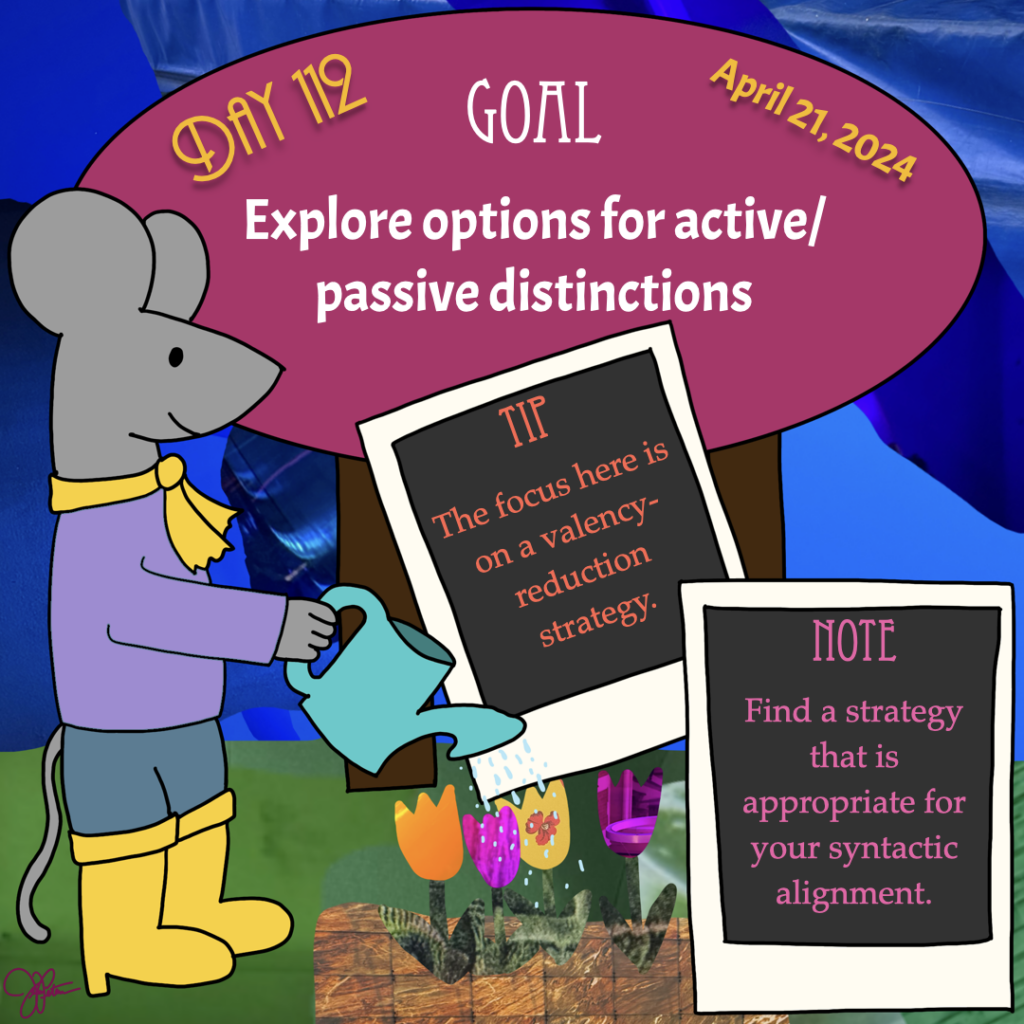
Goal: Explore options for active/passive distinctions
Note: Find a strategy that is appropriate for your syntactic alignment.
Tip: The focus here is on a valency-reduction strategy.
Work focus: Learn/Brainstorm/Try
Another type of inflection that can occur with verbs is passivization. This inflection is special, though, because it actually changes the valency of a transitive verb and, thus, affects the clause structure. The basic premise of the (anti)passive is that one argument is promoted while another is either demoted or eliminated (in the short passive structure) or pushed into an adjunct adposition phrase (in the long passive structure).
If your language has nominative-accusative syntactic alignment, the passive will promote the direct object of the verb to the subject position. The agent of the verb, then, may not be expressed at all or may occur in an adposition phrase. For instance, the active Jolene opened the door becomes The door was opened in the short passive or The door was opened by Jolene in the long passive. For English, the passive verb uses a form of “be” as an auxiliary alongside the past participle of the verb (e.g. was opened). For a language with ergative-absolutive syntactic alignment, the antipassive promotes the ergative argument and demote the absolutive.
As you explore options, make sure you look at languages with similar case-marking to yours to see how they handle case inflections in passive constructions to get ideas for your own language and its passive structures.
